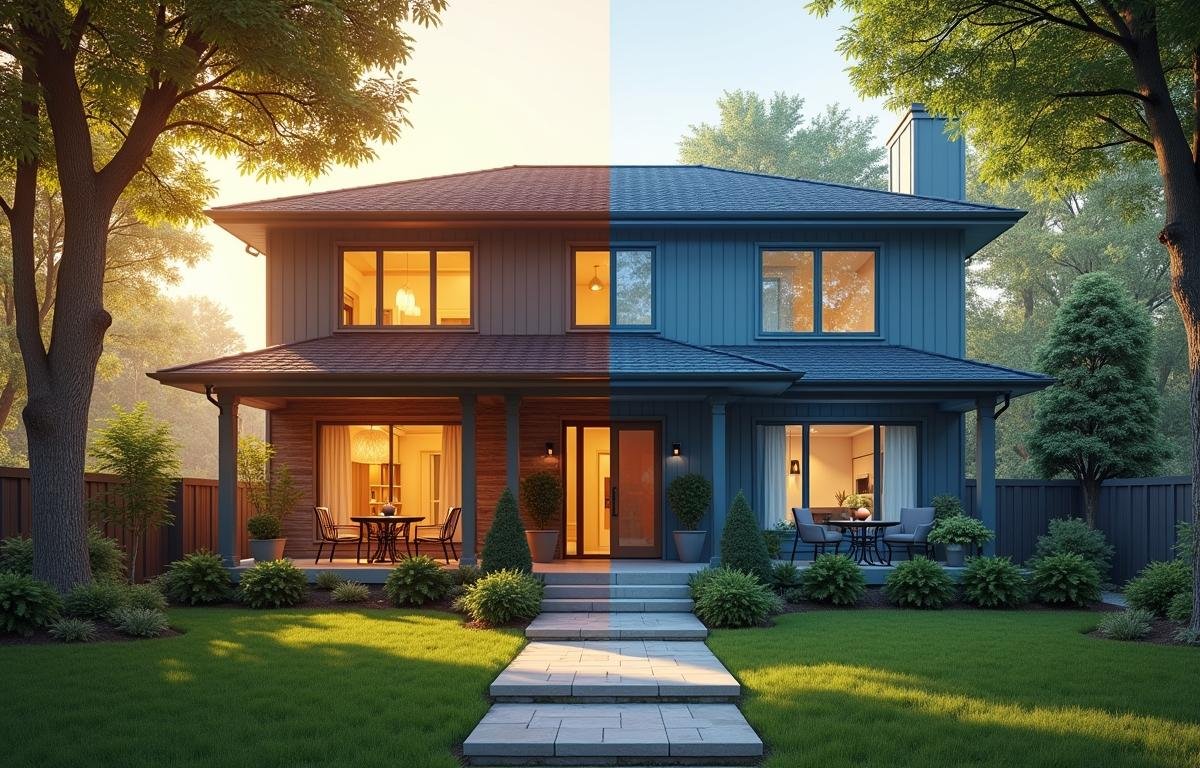When managing costs, consider how to effectively heat or cool a house. You might wonder if blasting the furnace during cold spells costs more than running the air conditioner in the depths of summer. The truth is that your monthly expenses depend on various factors, from where you live to how well your house is insulated. Examining these elements can help you discover practical ways to save money while maintaining a pleasant indoor climate.
Many homeowners are surprised by how dramatically local climates and personal habits can shift their utility bills. Some people believe that cooling is always less expensive because air conditioners have become more efficient. Others feel that winter heating is costlier because cold air lurks around every corner, seeping into cracks and forcing the thermostat to work overtime. In reality, it’s not just about temperature differences; it’s about how you manage your space and whether you take advantage of modern HVAC technology.
Contents
Why Temperature Control Costs Vary
Energy costs don’t solely hinge on whether it’s hot or cold outside. Instead, they often reflect the HVAC system you own, its age, and how frequently it needs to run to maintain your preferred temperature. A frequent cause of higher bills is an aging furnace or air conditioner that struggles to produce or remove heat efficiently. Upgrading an older unit can help reduce monthly expenses, but maintenance can also make an immediate difference, particularly if you change filters regularly.
Geography often plays a central role in determining whether you’ll spend more on heating or on cooling. If you live in an area with harsh winters, your home may need ample warmth for several months, which drives up energy usage. Conversely, those in a tropical or subtropical region could face more humid conditions that demand consistent air conditioning. No matter the climate, staying aware of how often your system cycles on and off is key to uncovering the biggest expense in your house.
The Role of Insulation in Overall Costs
Insulation provides a protective barrier that keeps your home’s temperature more stable year-round. Without proper insulation, the air you pay to heat or cool escapes too easily, forcing your HVAC system to work longer. As a result, your monthly utility bills climb in both cold and hot seasons. A well-insulated home, on the other hand, can help slash heating costs in the winter and reduce air conditioning needs in the summer.
Older homes can be especially prone to heat transfer through outdated windows and thin walls. Investing in modern insulation, double-pane windows, and sealing air leaks can greatly improve energy efficiency. Even small actions like using draft stoppers or applying weatherstripping around doors and windows can help you save a surprising amount of money. While these upgrades come with an upfront cost, they pay off by curbing excessive HVAC use.
Evaluating Different Climate Zones
Temperature and humidity levels vary greatly across the country, so heating and cooling demands aren’t one-size-fits-all. If you live in a region with scorching summers and mild winters, you’ll probably find cooling to be your biggest expense. On the other hand, regions with brutal winters might push you to crank up the heat for months at a time. By examining local climate data, you can anticipate your yearly needs and better plan for any home improvements.
Strategies to Reduce Heating and Cooling Expenses
It’s easy to blame your high bill on the weather, but smart changes inside your home can pack a big punch. Simple steps like closing blinds during peak sunlight hours can lower the temperature indoors and reduce air conditioning use. Embracing energy efficiency measures, such as switching to LED bulbs or scheduling regular HVAC tune-ups, helps your system perform better year-round.
Some homeowners turn to landscaping to create extra shade, planting tall trees or adding shrubbery to reduce direct sun on windows. Others go for advanced technology, like installing a programmable thermostat that adjusts temperatures based on time of day. When you integrate these techniques, you start to find equilibrium between keeping your place cozy and avoiding huge bills.
Making the Most of Thermostat Settings
Having a smart thermostat or even just using a programmable model goes a long way in cutting back on wasted energy. Setting it to higher temperatures in summer while you’re away, then cooling off right before you return home, avoids running the AC when no one needs it. In winter, lowering the heat while you’re sleeping can also lead to meaningful savings. These small shifts can accumulate over weeks, trimming costs while still keeping you and your family comfortable.
Should You Upgrade Your Current System?
It can be tempting to tough it out with an older furnace or air conditioner, especially if it still powers on and off reliably. However, older models often fall behind in energy efficiency. They may struggle to maintain a consistent target temperature. Once you factor in frequent repairs or part replacements, a modern HVAC system starts to look like a worthwhile investment.
A new system can drastically cut down on energy use, shaving dollars off your monthly bill. Energy Star–rated units tend to require less electricity than older models. If you’re debating between replacing a furnace and an AC unit, it’s best to compare your usual heating costs to your typical cooling costs. That way, you’ll know which one is likely weighing more heavily on your budget.
Key Takeaways For A Balanced Home
Finding a happy medium between a toasty interior in winter and crisp, refreshing air in summer is possible without breaking the bank. It often comes down to pinpointing how well your home retains temperature, how efficiently your system runs, and whether you’re reevaluating old habits. If you’re constantly surprised by your bill, take a closer look at each component of your house insulation, windows, doors, vents, and the HVAC unit itself.
Regular maintenance, like cleaning or replacing filters, helps your system work more efficiently in both winter and summer. Simple changes, such as rearranging furniture away from vents or sealing small leaks, can also make a noticeable impact on your monthly costs. Even a slight adjustment in your thermostat habits might tilt the scale towards savings. By combining these approaches, you’ll be able to secure the ideal temperature throughout the year while keeping spending under control.



